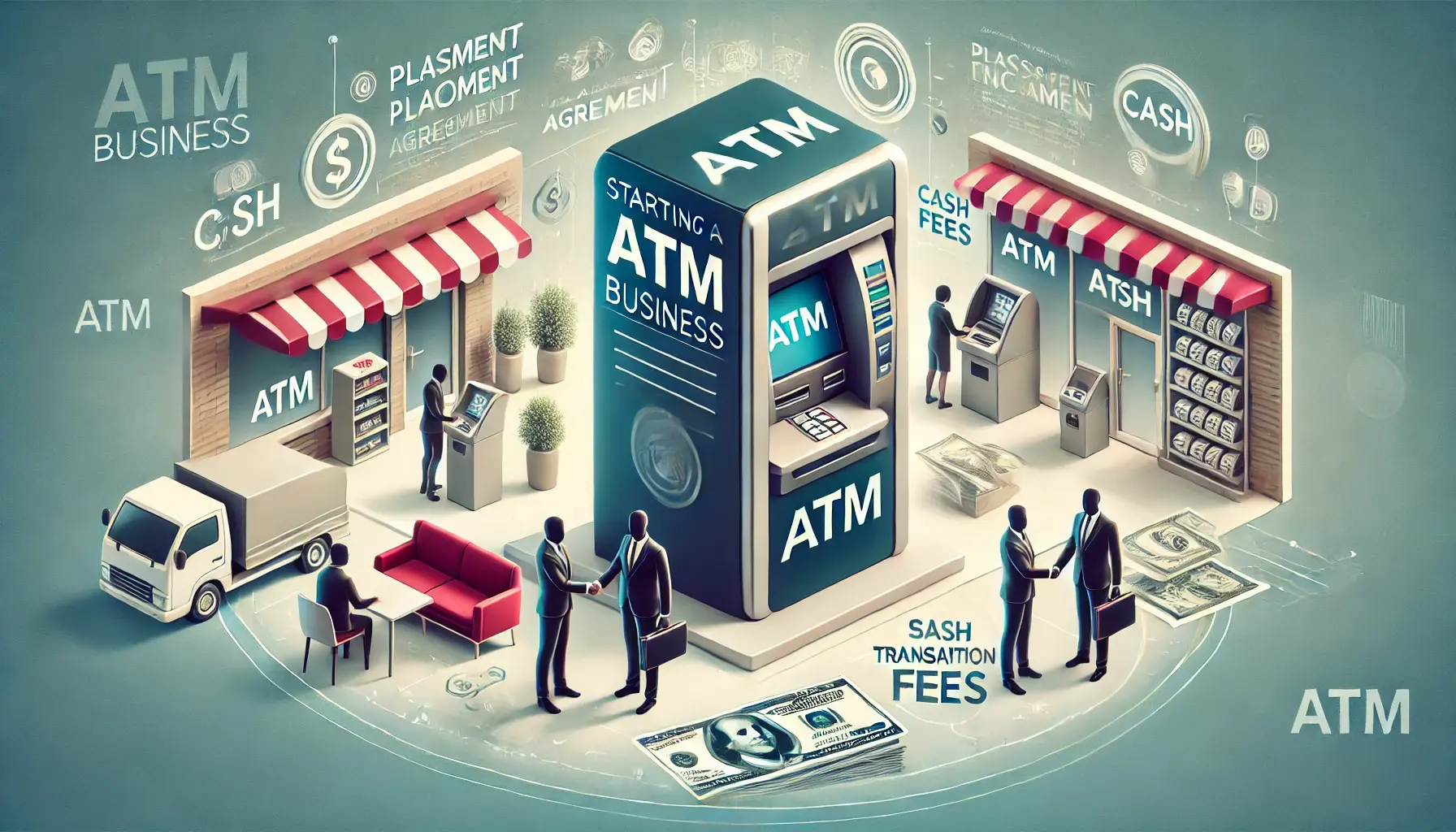How to Start an ATM Business: A Comprehensive Guide

Starting an ATM business can be a lucrative opportunity, allowing you to generate passive income with relatively low initial investment. By strategically placing ATMs in high-traffic areas, you can earn money from transaction fees each time someone withdraws cash. This guide will walk you through the essential steps to get started in the ATM business.
Why Start an ATM Business?
There are several advantages to starting an ATM business:
- Low Startup Costs: Compared to other ventures, the costs to start an ATM business are relatively low, typically ranging from $2,000 to $6,000 for the machine itself.
- Passive Income: Once you set up your ATM, it requires minimal management. This makes it an attractive option for earning passive income.
- High Profit Potential: Each transaction can yield a surcharge fee of $2-$3. If your ATM sees significant usage, the income can add up quickly.
What You Need to Get Started
Before diving into the ATM business, here are the essentials you’ll need:
- A Legal Business Entity: Form a legal entity (e.g., LLC) to protect your personal assets and manage business finances more efficiently.
- An ATM Machine: Purchase or lease an ATM. Prices vary, with new machines costing between $2,000 and $6,000.
- Location: Secure a high-traffic location for your ATM, such as convenience stores, gas stations, or shopping malls. Negotiate a placement agreement with business owners.
- Cash to Stock the ATM: Initial cash stock should be between $1,000 and $3,000. Regular replenishment is required based on transaction volume.
How to Choose the Right ATM Locations
Selecting the right location is crucial for your ATM’s success. Here’s what to consider:
- High Foot Traffic: Locations like convenience stores, malls, and bars typically see high foot traffic, increasing your ATM’s usage.
- Cash-Only Businesses: Target businesses that primarily accept cash, as customers will need easy access to cash.
- Negotiate Placement: Work out agreements with business owners for your ATM placement, often sharing a percentage of the transaction fees.
- Evaluate Competition: Look for areas with fewer existing ATMs to maximize your profit potential.
How to Purchase or Lease an ATM
Once you’ve identified a suitable location, it’s time to acquire your ATM:
- Buying an ATM: Purchasing a machine is a long-term investment, and new ATMs typically cost between $2,000 and $3,000. Be prepared to handle maintenance and cash replenishment.
- Leasing an ATM: If you want to minimize upfront costs, consider leasing an ATM, which can cost around $100 to $200 per month. This option allows you to assess the business model before making a large investment.
How to Handle Cash Flow and Replenishment
Maintaining a steady cash flow is vital for your ATM’s operation:
- Monitor Cash Levels: Use ATM software to keep track of cash levels remotely and set alerts for low levels.
- Replenishing Cash: Withdraw cash from your bank to refill the ATM regularly. The frequency will depend on your ATM’s usage.
- Hire Cash Management Services: For added convenience, you can hire a service to manage cash replenishment, albeit at an extra cost.
How to Earn Money from Your ATM Business
The primary source of income in the ATM business comes from transaction fees:
- Surcharge Fees: You can charge users a surcharge fee (usually $2-$3) for each withdrawal, which can lead to significant earnings if the location is busy.
- Revenue Splits: If your ATM is placed in a business, negotiate a split of the fees with the owner, typically keeping 70-80% of the surcharge.
- Transaction Volume: More transactions lead to more revenue. A well-placed ATM can average 5-10 transactions a day, resulting in considerable annual income.
Pros and Cons of Starting an ATM Business
Here are some pros and cons to consider:
Pros:
- Low startup costs
- Passive income potential
- Scalability with the option to add more ATMs
Cons:
- Success is location-dependent
- Regular cash management is required
- Competition in certain areas can impact profits
Conclusion
Starting an ATM business can be a profitable venture if approached correctly. Focus on selecting high-traffic locations, maintaining your machines, and managing your cash flow effectively. With a relatively small initial investment and the potential for significant returns, an ATM business is a compelling opportunity worth exploring.






